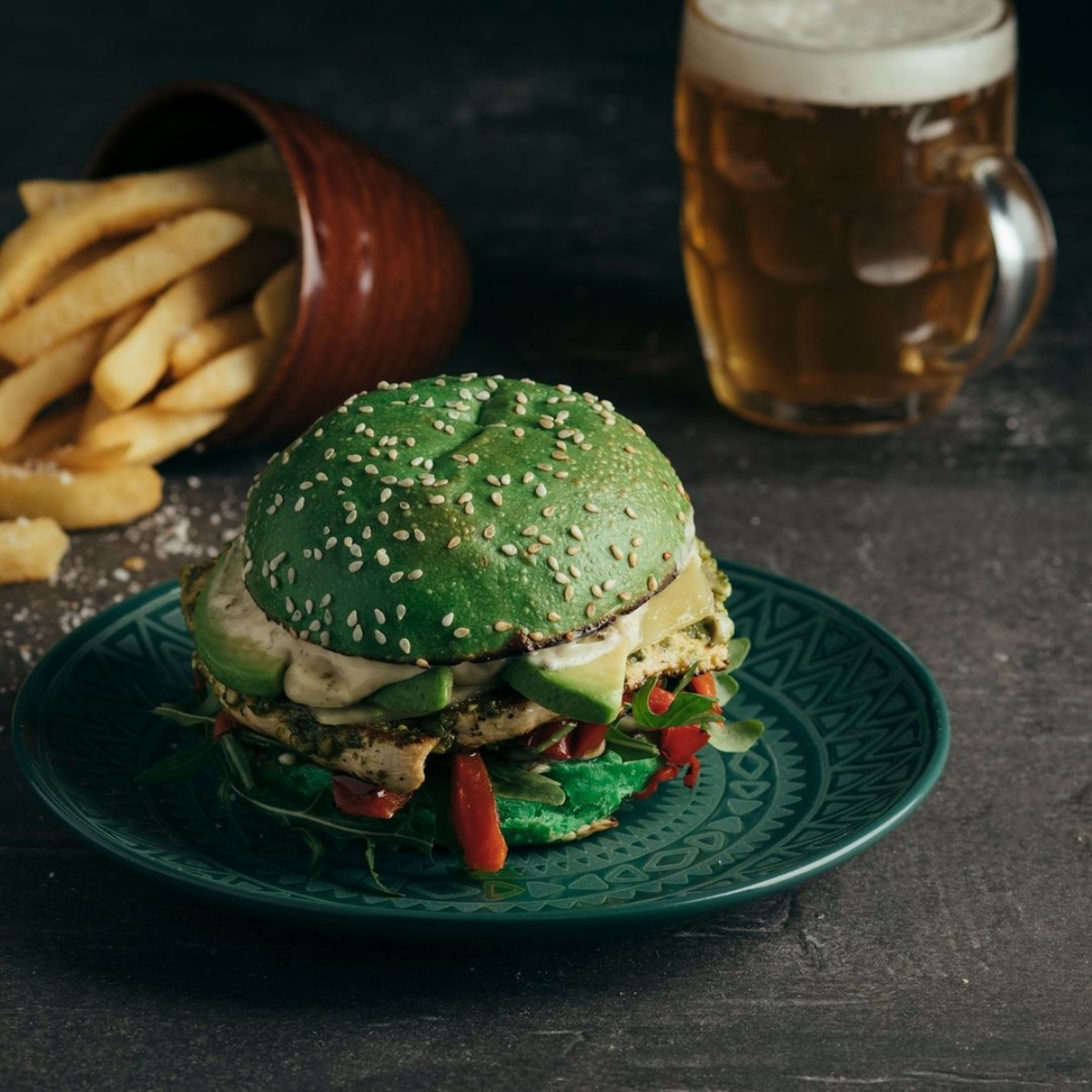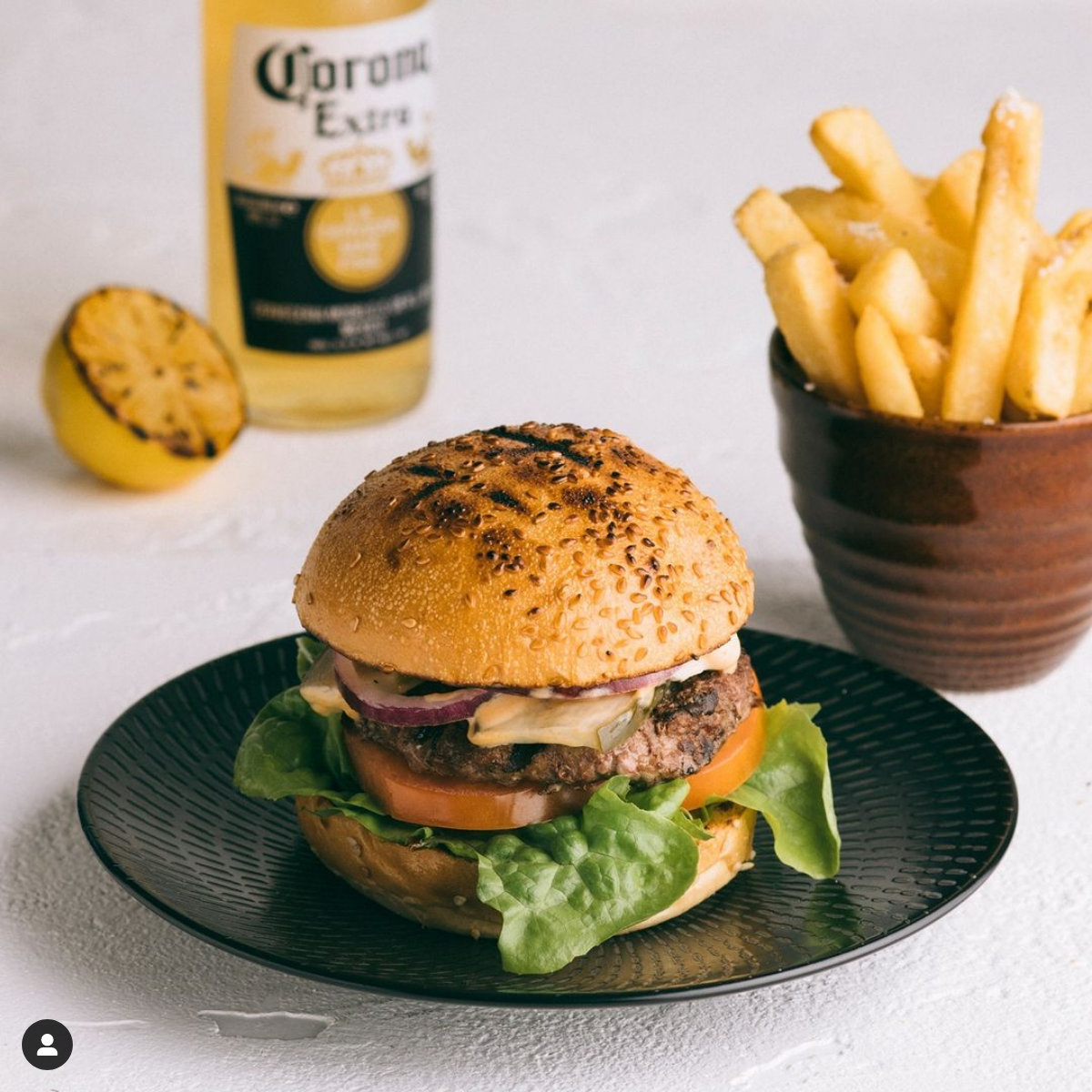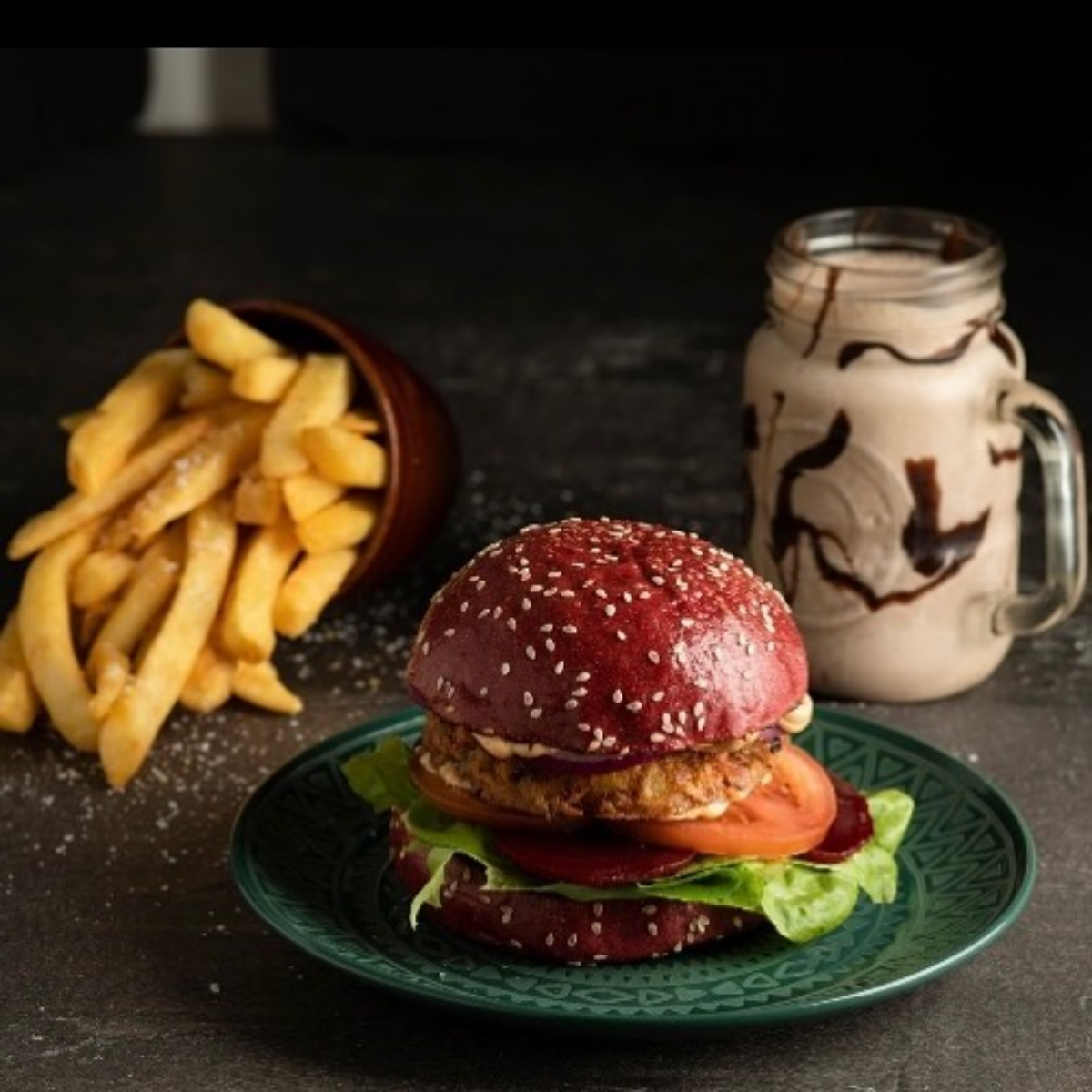Forging a distinctive niche in the burger market – two success stories
In the third part of our extended burger feature we take a look at two successful operations where burgers play a prominent role on the menu – standalone market newcomer Griller’s Mark, which is cutting its own path as an upmarket eatery based on the QSR model, and well-established Melbourne-based brand Huxtaburger, which also has a presence in Sydney and Perth.
Griller’s Mark has only been open since June, serving an upmarket selection of burgers, ribs and sides in a heritage building in Ballarat’s up and coming dining precinct bounded by Lydiard and Armstrong Streets. As one of the business partners, Noble Sehmi, explains, “We have several competitors nearby and we’re trying to forge out our own niche in the market. We wanted to offer our meals at an affordable pricepoint while still delivering on the flavour and quality of an upmarket style venue.
“When you give customers the option to mix and match ingredients, it opens up a lot of choices for them”
“Given all the issues around Covid lockdowns we decided to go with a QSR style model which makes it easier to offer takeaway. And burgers have proven themselves over the last couple of years as a safe option. People see them as comfort food and our burgers are designed to travel well - you can have them after 40 minutes and still enjoy them, because they’re easy to reheat. And when you give customers the option to mix and match ingredients, it opens up a lot of choices for them.”
Noble says a lot of work has been put into ensuring a ‘holistic’ menu: “Some places have a specific burger concept which is very concentrated on one kind of meat – they might do 80 or 90 per cent chicken to 20 per cent beef. Whereas we have a holistic menu of five chicken burgers, five beef burgers and four vegetarian burgers. And given the massive upsurge in the vegan, vegetarian and gluten free market, we made sure we had plenty of those options too, because we want to cater for everyone. So many times you’ll see one person who wants gluten free or vegetarian will dictate where a whole group is going to dine out, so it’s important to tick all those boxes.”
This philosophy even extends to the choice of bun – with Black Squid Ink, Green Matcha, Pink Beetroot and Gluten Free buns all on offer, for a dollar extra over the standard fare – plus an extensive range of sauces. “It’s remarkable how much you can extend your sauce options from the one base,” Noble points out. “Take mayo for example – we have seven different mayo sauce options, from chilli mayo to chipotle to pesto to kewpie and Japanese.
“It’s relatively easy to trial and test with the customers because there’s a known element – when you say ‘mayo with chipotle’ they may not be familiar with chipotle but they’ll say ‘I like mayo, so I’ll give it a go’. Our aim was to come up with a range of sauces that people would be willing to try.
“The other important element is bastings – they can add a lot of extra flavour. I created what I call a Fury baste at home that I’d always wanted to make, with green chilli and lemon, and we introduced it on our Fiery Bird chicken burger and it’s really taken off. I wasn’t sure it would resonate with the caucasian community because people often aren’t used to hot fiery flavours but customers have really enjoyed it. So we keep working to come up with inspired flavours.”
Despite two other burger-dedicated businesses within a couple of blocks, Noble says he’s had “zero worries” about the competition – “our concern has been more around the outside influence of Covid. I’m confident of our success because we’ve been able to bring a point of difference – when you look at our online reviews people compare us and say it’s the quality that shines through, along with our service.
“You need to focus on both those elements to be successful in foodservice – we are in the hospitality business after all, and that’s often something that’s forgotten. But if we stick to that goal of providing hospitable service and good food, that’s the path to success. I know we have great food, and I’m sure some of the others do too, but we also try to bring something extra through the holistic menu, the service and even the ambience of the heritage building we’re in.”
Huxtaburger holds its own during Victoria’s lockdowns
Over in Melbourne, Huxtaburger started life as an offshoot of Huxtable, a restaurant on Smith St in the inner-city Melbourne suburb of Collingwood. Huxtable has since closed its doors but Huxtaburger has gone from strength to strength, riding the crest of the burger wave and opening outlets across Melbourne, then expanding into Sydney and Perth.
“They were doing really well at Huxtable, and one night after work they were making burgers for the staff and everyone thought they were really good,” recounts Huxtaburger COO Jason Geriesi. “And on Smith Street there were lots of places to eat late after a night out, but no burgers – so they thought, how about putting in a burger business for the night life?”
“We came into the game early on so we have a cult following and very loyal customers”
The plan was drawn up on a napkin after a few drinks, a burger recipe was developed and rated by the staff, and then the opportunity came up to take on a lease across the street. Within a few weeks of opening there were massive queues outside every night of the week, and very soon it became clear that the success of Huxtaburger was an opportunity too good to ignore.
Jason acknowledges that the huge spike in demand for burgers has led to increased competition, but points out, “We came into the game early on so we have a cult following and very loyal customers. We’ve also put a lot of effort into brand recognition supported by the food credentials we have. We say ‘smash a burger, smash life’ – you live your daily life and we support you with a really good burger along the way.
“Both our founders have a fine dining background and we’ve always focused on quality ingredients. We think all our recipes are quite unique and we’re famous for our signature bun which is a glazed milk bun with a brioche taste to it. The burgers are really high quality and the menu’s simple.”
“We stand by our food credentials, but we’re now looking at what else we can offer customers when they come in”
Huxtaburger currently boasts five venues in Victoria with another set to open shortly, two in Perth and one in the inner-Sydney suburb of Redfern. “We’re definitely not chasing the QSR model,” Jason says, “rather we’ve reflected on what we stand for as a brand, who we want to be and what our customers are seeking. Burgers are so accessible now and there are a lot of really good players out there, so the question becomes: what are the driving factors for our customers to go to particular places? We stand by our food credentials, but we’re now looking at what else we can offer customers when they come in.”
The newest Huxtaburger venue set to open in Victoria will be trialled as a concept store – with a pool table, full bar, cocktails, a beer garden out front and provision for live music and/or a DJ. “We saw last time restrictions eased across the country that people were flocking to bars and generally places that not only offered good food but where they could hang out with friends and good music. So if we can couple that experience with a really awesome burger, we feel that’s a strong brand proposition.” A similar second venue is due to follow shortly, with the aim of having both up and running by Christmas.
In recent years Huxtaburger has run several limited time offers as a means of gauging customer response, and Jason says “what we’ve found is that our customers really love the classics, they’re consistently our highest sellers. Generally we don’t play to the ‘dude food’ market where you pile on the patties, cheese, random ingredients into burgers so you can’t fit them in your mouth. We try to keep it simple. Our plant-based burger is biggest growing category at eight per cent by year and we have a limited time offer coming out for vegan month next month – we’re looking at our top classic burgers and trying to create plant-based verisons of them. We’ve also introduced a virtual brand called Huxtachicken which is a fried chicken as that’s a great complement to our burger and we’re just about to relaunch that side of the menu, introducing housemade bespoke sauces and coatings, heroing some native bush seasonings and ingredients, as a Deliveroo exclusive.
“But in terms of the burger menu, we’re in a pretty good place, with something for everyone – we don’t want to go down the route where we have 30 or 40 menu items and it becomes overwhelming. We keep it simple, stick to our roots and make sure we cater to the market, play around with the sides and continue to test what our customers respond to as LTOs.”
Jason nominates two recent examples of LTOs which resonated well with customers: “During the lockdowns we introduced a burger which heroed a classic Kiwi onion dip with a beef pattie, cheese and pickles at a pricepoint around $10.90 and that went bananas – it was a fun campaign for us, very much on brand with the burger positioned as a little taste of home for all those Kiwis in Australia who couldn’t go home during the pandemic, and that exceeded all our expectations. What we learnt from that was that keeping it simple with not too many ingredients and having an accessible pricepoint works for our customers.
“And while the pubs were closed we did a pub classic parma in a burger – parma, chips and salad all in the bun which was pretty big for us. We don’t normally go down that route with so many fillings but we wanted to see what the appetite would be like for it.
“That one was a bit pricier at around $16, a little more with delivery, and we saw a good uptake on it – we even had people writing to us asking to bring it back and add it to the menu permanently, which was a great response. So we continue to trial these and collect the internal data, that way we can make good sound menu decisions about what stays and what doesn’t, learning as we go.”
Huxtaburger has managed to hold its own during Victoria’s lockdowns – “we were early adopters of delivery,” Jason points out, “in fact we were Deliveroo’s first burger partner when they launched in Australia, and we developed all our packaging to suit delivery. So we’ve always been able to deliver really good quality at optimum temperature and had built a robust revenue stream – it was unfortunate to lose our dine-in sales but luckily for us we had the systems and processes in place to go to 100 per cent delivery when the business model had to shift.
“So we were impacted, but we saw our delivery sales skyrocket even as we lost our dine-in trade. Now everybody’s used to having their meals delivered and we see the task ahead of us as inviting customers back to dine-in by offering them an excellent experience.”











